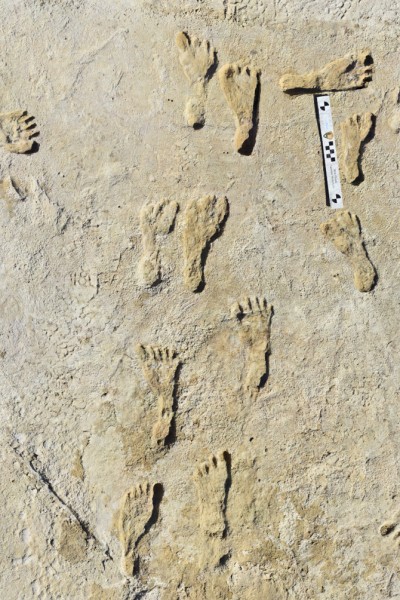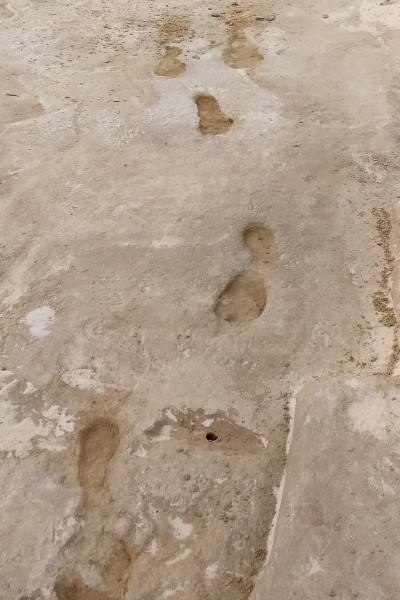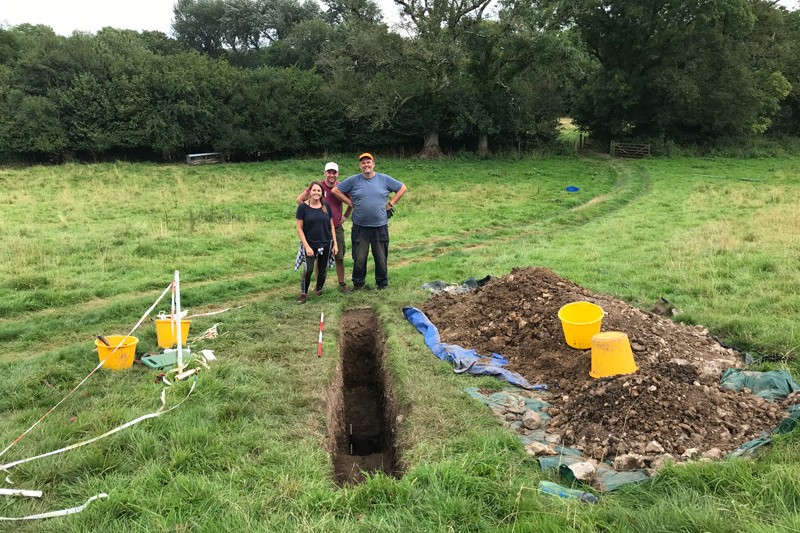Research into a series of footprints discovered in White Sands National Park has provided further evidence on the timeline of human activity in the Americas.
A 2021 paper in Science rewrote the timeline of human activity with human footprints found at the National Park in New Mexico dated to 23,000 years ago, 10,000 years before humans were previously thought to have been active in the region.
The initial study involved dating the seeds of common ditch grass to build a timeline of when the footprints were made. This dating method is robust, though open to challenge due to the ability for these seeds to be affected by hard water.

Subsequent radiocarbon dating analysis of isolated cells of fossilised pollen – a process called flow cytometry – has confirmed the findings of the initial study and dated the footprints to 23,000 years old. The study, published in the journal Science, tested the original dating framework by taking the pine pollen and dating it to validate the chronology of the original study. This process was also able to confirm that hard water was not present in the area, validating the results of the initial study.
Both the pollen and the original common ditch grass seed were found in the footprints and within the same layer of hardened mud the footprints were found in, allowing scientists from the United States Geological Survey (USGS) to add further proof to the timeline of human activity and show activity in the Americas at a date earlier than previously thought.
Dr Sally Reynolds, Principal Academic in Paleoecology at Bournemouth University, is a part of the project team, she said, “The site in New Mexico has rewritten history books as we’ve discovered wonderful examples of human activity, the way that humans interacted with one another, with the landscape and with the animal life there. These footprints provide a valuable window into the lives our ancestors lived and how much they were like us”.

Professor Matthew Bennett, also at Bournemouth University and a co-author of the study, added, “It is always important to challenge scientific research, especially when it finds something new, or updates previously held knowledge, so we were pleased that our original work was discussed and tested by the scientific community. We are equally delighted that these new results underline the accuracy of our original study and provide a fascinating update to the movements and lifestyles of our ancestors”.
To add further confirmation to the research, scientists used a third dating method, called optical stimulated luminescence, to look at background radiation in quartz also found within the same geological layers – the more energy in the quartz, the older the quartz is. By exposing the quartz energy to light in a lab environment, for the first time since it last saw natural light, scientists were also able to determine energy in the quartz and, therefore, the timeline that correlates with other results, aging the footprints at the site to 23,000 years ago.
Dr Reynolds concluded, “These findings have underlined our timeline, and given proof that human activity took place in the Americas long before we previously thought humans could have been in the region. Further work can now be done to understand how humans moved through this landscape, what they were doing, and how science can illuminate the missing 10,000 years we now know humans existed in the Americas. We’re looking forward to unearthing more secrets about how our ancestors lived.”
The project team includes experts from Bournemouth University, the United States Geological Survey, the National Park Service, Cornell University, and the University of Arizona.
The paper is published in Science.




